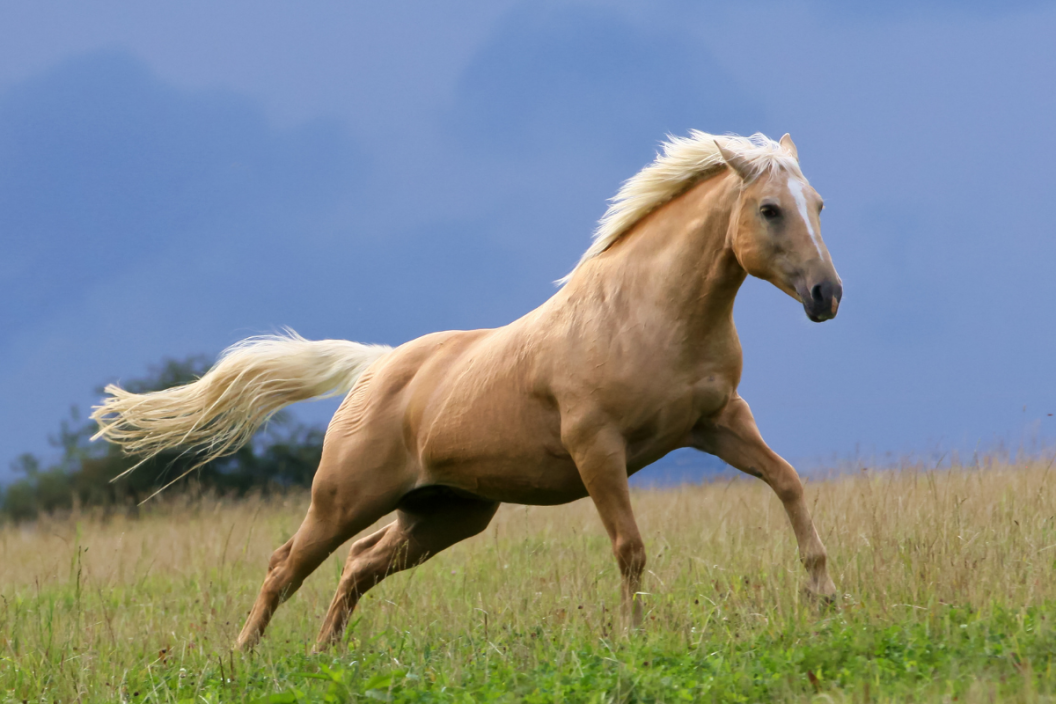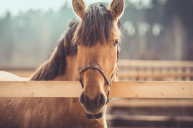They say, "Blondes Have More Fun" - That certainly rings true for the Blondes of the horse world.
You can't miss it: the gorgeous golden coats and the striking light blonde (pretty much white) manes that almost glisten in the sun; Palomino horses are and will always be an all-time favorite with horse fanciers around the world.
Palomino horses have been around for as long as horses have been around, but the exact origins of the coat color on these horse breeds is unknown - However, they are rumored to be descendants of Arabian color patterns. People have admired the Palomino horse for centuries, but besides the stunning golden coats, what else makes them so popular among horse lovers? Here are ten facts that prove why Palomino horses are an all-time favorite.
1. They have Spanish Royalty Roots
https://www.instagram.com/p/CGpIciKBHpz/
Yes, you heard that right. These golden horses have a history with the Spanish royal family. It is said that the royal family in Spain fell in love with palomino horses, and Queen Isabella had reserved 100 palomino horses for only nobilities to ride. Queen Isabella also had a palomino stallion within her steeds when she ventured out into the New World - and had sent these palomino horses to North America.
2. Palominos Come in Many Horse Breeds
A palomino horse actually refers to the coat color of the animal, and not to an actual horse breed. 50% of all registered palominos are Quarter Horses, while other common horse breeds sporting the palomino color are American Saddle Horses, Thoroughbreds, Standardbreds, Arabian horses, Morgans, and Tennessee Walking horses.
3. The Beautiful Coat Color (This is a Must!)
https://www.instagram.com/p/CGhzPWFHklp/
Of course, we can't forget about the oh-so-gorge golden coat color of this beauty. There are many horse breeds that have the distinct palomino color - to be a true palomino, the horse must have a golden coat with a white mane. This is all because of the cream dilution gene, and without getting down to the nitty-gritty science speak of it all, it comes down to this: The palomino color is created by combining a chestnut base coat and a single allele (definition: a variant form of a gene) of the cream dilution gene.
4. Palomino Horses Come in Many Different Shades of Color
Pale gold, creamy, brassy, even deep gold - palomino horses come in a range of stunning gold hues - with the quintessential palomino horse donning a gold color reminiscent of a shiny gold coin. These golden horses have four basic color variations: Light palomino, golden palomino, chocolate palomino, and pearl palomino. Light palomino horses are distinguished by their light sandy color (not to be confused with a cremello horse, which has pink skin); the chocolate palomino is created by paring a palomino with a liver chestnut horse; and while the pearl palomino is a rare color, golden palominos are the most recognizable color of all the palomino horses.
5. Their Colors Can Change
https://www.instagram.com/p/CDhEFxlJCyC/
Palomino horses' coat colors can change from their diet - for example, by adding certain minerals and proteins to their diet, their hair will darken or lighten, or can even cause a red tint in the white mane and tail of a palomino horse. Fun fact: if a palomino is fed high protein hay or grains, that could cause dapples in its coat or a darker coat color. Seasons could also be a cause of a drastic color change as in the winter, a palomino will shed its summer coat and reveal a much lighter coat.
6. "The Horse is a Horse Of Course Of Course!"
Yes, that's part of the theme song to none other than, 1960's television sitcom "Mr. Ed"! That's right, good old Mr. Ed was indeed a Palomino horse. This 1960's comedy launched one of the most famous (talking) animal television stars ever, and Mr. Ed himself sported the classic palomino look: a luxurious golden coat and a white mane - not that it's easy to tell given it was in black and white.
7. These Golden Horses Have Two Fan Clubs in the United States
https://www.instagram.com/p/CDrYcoUHq-j/
There are two associations that cater to Palominos in the U.S.: The Palomino Horse Association, and the Palomino Horse Breeders of America. These two groups provide registration of palominos, host events, and talk about all things Palominos. To qualify for registration, your horse has to have the palomino color, no matter the breed.
8. Breeding Palominos is an Exact Science
The good news is if you want to increase your chances in producing a palomino foal, the process is actually pretty straight-forward. Just be sure to cross a chestnut horse with a cremello horse (also just a color, not a specific breed), and the results will be a beautiful palomino foal.
9. Some "Palominos" Can Fool You
Not all golden horses with white manes are palominos! A horse cannot be a true Palomino without the cream gene - and a good example of this is the Haflinger horse. The Haflinger does not carry the cream gene, but yet, they still sport golden coats and white manes - but technically, the Halflinger is a chestnut horse, not a true palomino.
10. Palominos Have Been the Subject of Many Works of Art Throughout History
Last but not least, Palominos are an all-time favorite among horse fanciers because these gorgeous golden beauties have a history of being featured in art masterpieces all throughout the past - Palominos horses have been admired for centuries and were the subject of many artworks and literary pieces. They've been seen depicted in masterpieces from ancient cities in Rome, Greece, Mongolia, Persia, China, and Japan.
Ever been around a Palomino? Share your experience at our Wide Open Pets Instagram!
This article was originally published November 3, 2020.




